In the packing frenzy that followed the recent changes in my living situation and site placement, I considered how important my boots have been since I first put them on in August. I remember buying them before I left for Mexico and feeling absolutely sure that they would hold up considering the many miles of use they would endure in the coming year.
They were many things: breathable, lightweight and clean! A comfortable yet sturdy pair. These trusty hiking boots have carried me up and down the village mountainside, from home to home, and there’s no doubt that they bear the signs of wear and tear (and not to mention a certain odor…). They’ve trekked throughout village roads on bright, sunny days and through rains when the rush of water running down the roads carries dirt and all sorts of not-so-clean things. They have entered hospitals, clinics, and families’ homes with dirt floors, some cement. They’ve climbed rocky terrain high up the mountain and trudged through both muddy and dry grassy areas. Now after six months of consistent use, they mean more to me than ever. And oh, the stories they tell. As a way to honor the place, people and their stories, I’d like to share with you some of the soul-satisfying moments (taken almost entirely from journal entries) that have been such a big part of my time in the village: … October 7, 2009 Working with 22-year-old Edith makes me think long and hard about “rules.” On home-visits I make the effort to shake hands with everyone but when it comes to her, part of me hesitates. I think: “She’ll hold my hand too long, or squeeze it too tight.” Edith has Cerebral Palsy and shows a lot of symptoms of arsenic poisoning. Receding gum line. Purple lips. And since she isn’t able to communicate verbally, her mom and aunt have to explain to me why she makes certain noises or behaviors. Most of the time I feel like we’re just guessing. Today Edith came out with her aunt and sat down next to me. Then she started shaking her head, clapping her hands, and slapping her feet together. It was almost like a convulsion. When her mom put her hands back in her lap, I noticed she couldn’t control her saliva, another symptom of arsenic poisoning, and it was running down her chin and her hands were somehow covered in this sticky dribble. “Oh please,” was my reaction. I knew what would come next and I really did not want to hold her hand. Moments later when she reached out and grabbed my hand, it was all I could contain to not flinch and let go right away. “Not clean!” I thought to myself, trying hard not to let any of this show on my face. It took every part of my inner reserves to force myself to squeeze her hand back so that I would BE with Edith and not just go through the motions. I tried to erase whatever it was that told me to treat Edith differently because of her hygiene issue. More than anything, I sat there wanting to want to hold her hand, to tear down the social rules about cleanliness that act as barriers in moments like this. Edith reminds me of what I need to learn, reflect on, and who I need to become in that process. I pray so hard to grow to love every part of her this year, even when saliva drips down her chin. She is God’s beloved. Why can I not see that right away? Later I went to Ofelia’s house after promising to read “The Three Little Pigs.” It was strange, though, in a home made of corn stalks, adobe and a tarpaper roof, to be reading a story about how a mean fox could “huff and puff and blow your house down.” A house just like this one. January 14, 2010 Antonio is doing better now that he’s out of the hospital but still needs a lot of care. Today Gabriela and I brought his mom a few bananas, suero (a rehydration drink), and his medication. When we reached their house Marisol, one of Antonio’s older sisters, ran up and gave me a huge hug! Scooping her up in my arms I said: “What’s my name?” “Katie!” “Yes it is! And how old are you?” “Eight,” she said grinning. I started laughing as her mom yelled from the doorway: “Noooooo, you’re four!!” Hahaha… Love. Her. January 29, 2010 As we were finishing dinner last night, two of the midwives came over and said the words I’ve wanted to hear all these months: Parto/Birth! The midwives took their supplies and gloves out of the clinic and we hustled up to Susi’s house. The whole way there we were alert and wary of the dogs barking and drunk men along the way. In a well-lit one-room house, Susi was laying on a bed, surrounded by her in-laws and a neighbor. They whispered encouraging words to support her along her labor. Every so often she would get up, sip tea, and walk around the room. She moaned with each contraction, putting her hands on her lower back, exhaling, trying to find a rhythm with her breath. It seemed like the pain had become more intense but her contractions were still far apart. By 1am the midwives decided to let Susi rest and told us to return to the Center. They said that when it was time to give birth, a family member would call come and get us. Not much later, by 4am we were hurrying up the road again. This time, Susi was in bed covered by blankets and covered her head with a shawl. One of the midwives was under the blanket with a flashlight telling her, “That’s right. Keep going. That’s right.” Susi’s moans were so soft that I could barely hear her. The hushed voices that had encouraged her until this point were now stronger and louder: “Yes, Susi. You can do it, Susi. Come on.” Then there was a splash sound! The midwife’s hand reached across the bed for the right supplies and all in an instant a healthy baby girl was born! Tears, hugs, and well-wishes filled the room. Absolutely incredible. What’s amazing is that all this was done under a blanket. “You might as well do it with your eyes closed,” someone said. And I bet they could. We left at 6:30 a.m. Everyone went back to the Center for another hour of sleep but Sarah and I had to meet Socorro, a special woman in front of the church so she could catch a bus to the hospital for a prenatal check-up. No, Socorro was not there. With no other choice but to go to her house, Sarah and I ran to her house, entered her room, woke her up, threw some clothes on her and started running again. Down the hill, Sarah kept saying: “She must think she’s dreaming!” She was right. It felt so surreal. All sorts of dogs were growling and barking at us, coming super close to our legs and I thought they might bite us. We grabbed some rocks and pretended to throw them but the dogs just wouldn’t let up. Ah, so scary! I tightened my grip on 7-month pregnant Socorro’s hand and we rushed to the bottom of the hill. Gone. The bus left without us. Oh, Socorro, I’m so sorry. In the end, the midwife who had delivered the baby not two hours earlier agreed to help find a later bus and accompany Socorro to her appointment. I so admire the women here. For their guts and boldness! For taking risks, for being who they are! January 23, 2010 Esperanza, a 101 year-old woman who lives alone, finally has a cat to keep her company. She calls it Panchita, little Pancha. February 12, 2010 - Then meeting Elidia on the road. She keeps her hand on my elbow as she tells me about her day’s activities. Well, until these two encounters, today felt like a frantic race to get everything done. Slow down. I get it now. Their way of being makes this so easy to understand. These boots, the stories they tell and the stories we share are all part of an incredible journey that has allowed me to walk alongside - and be transformed by - the community and specific people I was placed with. In the meantime, I’m learning to trust. Trusting that the new place, people and all the surprises that are just around the bend shed light on this journey still. Most of all, trusting that in this next step God will be waiting for me there. Grateful for you, who accompany me on this path, paso a paso, step by step, Katie
2 Comments
Dear friends and family,
Since February there have been some major changes in my site placement and living situation, ultimately reshaping the direction of the remainder of my time in Mexico. After an unexpected and heart-crushing turn of events, a whirlwind of social and legal issues in the village became heated and intense. Until things subside, the organization had to significantly decrease its presence in the village and put a halt to the work that is being carried out. Sarah and I ended our placement and without having the chance to visit the village one last time and say goodbye. It’s been tough. This week has been a sort of physical and spiritual “limbo” for me. I feel that all this upheaval has left me feeling torn and uprooted. I’ve said painful goodbyes to our coworkers in the office but haven’t had that same chance with those dear to me in the village. Plus there’s been a lot of packing and unpacking in a few short days – and more to come in the next phase (moving in with a homestay family in Cuernavaca and adjusting to a new work site). After Sarah and I carefully packed our bags and left the apartment, our country coordinator Andrea and her husband Luke graciously took us in for a week (even though they were in the midst of a move, too). We settled in with them for a couple days and then moved into their new house. Here we’ve been staying while Andrea sorts out separate placement sites and living situations. It’s true, as someone pointed out, that’s we’re in good hands with Andrea “at the helm.” But even before the shifts from apartment to house, and house again, last Sunday I got to see familiar faces during a Skype conversation with my home congregation, St. Luke’s. I could feel the love in that room! It was so wonderful to share what my experience has been like in the village, to describe the place, the people, and the stories we share. More than anything, it gave me new energy to and openness to embrace what’s in front of me. The up-rootedness that seems to be unfolding all around me will gradually fade into the past. Of that I’m sure. Still, I don’t know what comes next. What I’m most grateful for now is the tons of support and encouragement like what I experienced last Sunday. I know the joys, struggles, and vulnerability in these past weeks are held with great care and empathy; transforming, in a sense, this time of up-rootedness into feelings of rootedness. From the bottom of my heart, thanks to each and every one of you for being who you are and helping me grow from here. In peace, Katie We left the border and returned to Cuernavaca. Except the border is not just there. With the faces and stories of those we met sinking into my conscience, I recognize that it’s in our governmental policies, in our communities, our churches, and in our conversations. A recent trip to the US-México border allowed our YAGM group to renew our visas and spend a week learning about immigration, U.S. border policy, and the many ways individuals, organizations, and churches mobilize to effect positive changes on the border. We were privileged to learn from those who advocate, pray, and walk to end death in the desert. 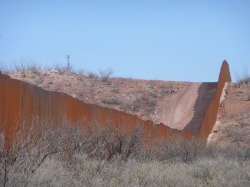 We went to the border. A wall, fence. Not in darkness of night or in the early mornings of dawn. We didn’t throw a ladder against the physical barrier and walk, run, or crawl when we had to. We walked in broad daylight. Paused at the wall and soaked in the striking desert landscape. This is the space where one land becomes two. A wall can control where migrants cross but not why. Encouraged by the need for cheap labor in the U.S. to grow our food and make our clothes, many make the journey North. Footprints move forward. Knowingly facing fear and risk, migrants pack their bags and their courage for the long and tiring journey ahead. Migrant belongings strewn across the desert: discarded water bottles, Red Bull, tuna cans and beans, and extra pair of socks or clothing. At another wall. The names of those who have died attempting to cross the Arizona desert are written on these tiny pieces of paper. Since 1998, the U.S. Border Patrol has counted over 4,000 migrants deaths near the border. The Human Rights Coalition estimates that this number is actually higher. Each year, 200+ migrants die due to dehydration, hyperthermia or hypothermia. In 2010 alone, “just four months into the fiscal year, the count of Arizona recovered remains is 61” (derechoshumanosaz.net). A weathered blue flag indicating a water station nearby. Written on this water tank: “Do not destroy this. You need them.” The U.S. and México have a longer history of being united as good neighbors than being separated by a wall. Now a physical barrier stretches over much of the 2,000 miles of the U.S.-México border. Urban crossing points are shut down, forcing most migrants to cross into the most isolated and desolate areas of the desert and mountains, even treacherous irrigation canals. With deaths rising every year, the border wall has failed as a deterrent; instead, it forces people to take a more dangerous entry route into the United States in search of a job. As long as our current immigration policy does not match the economic reality, countless migrants will continue to die in the desert that has already claimed more lives than the wars in Iraq and Afghanistan combined. Relevant LinksBelow are some links to the organizations and movements that seek solutions to the issues confronting the U.S.-México border:
|
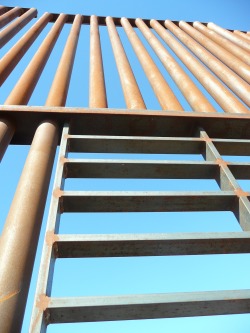
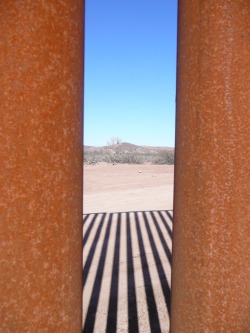
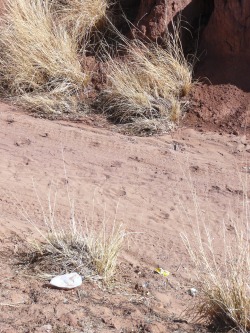
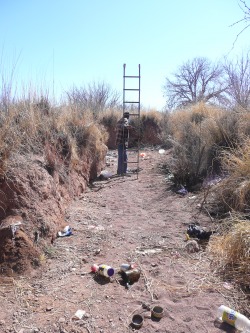
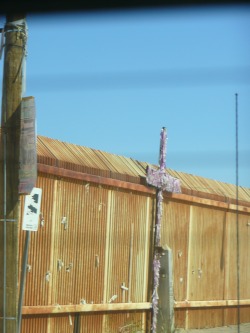

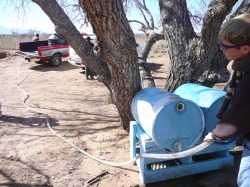
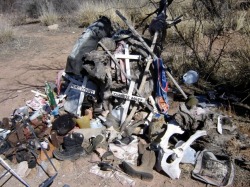
 RSS Feed
RSS Feed